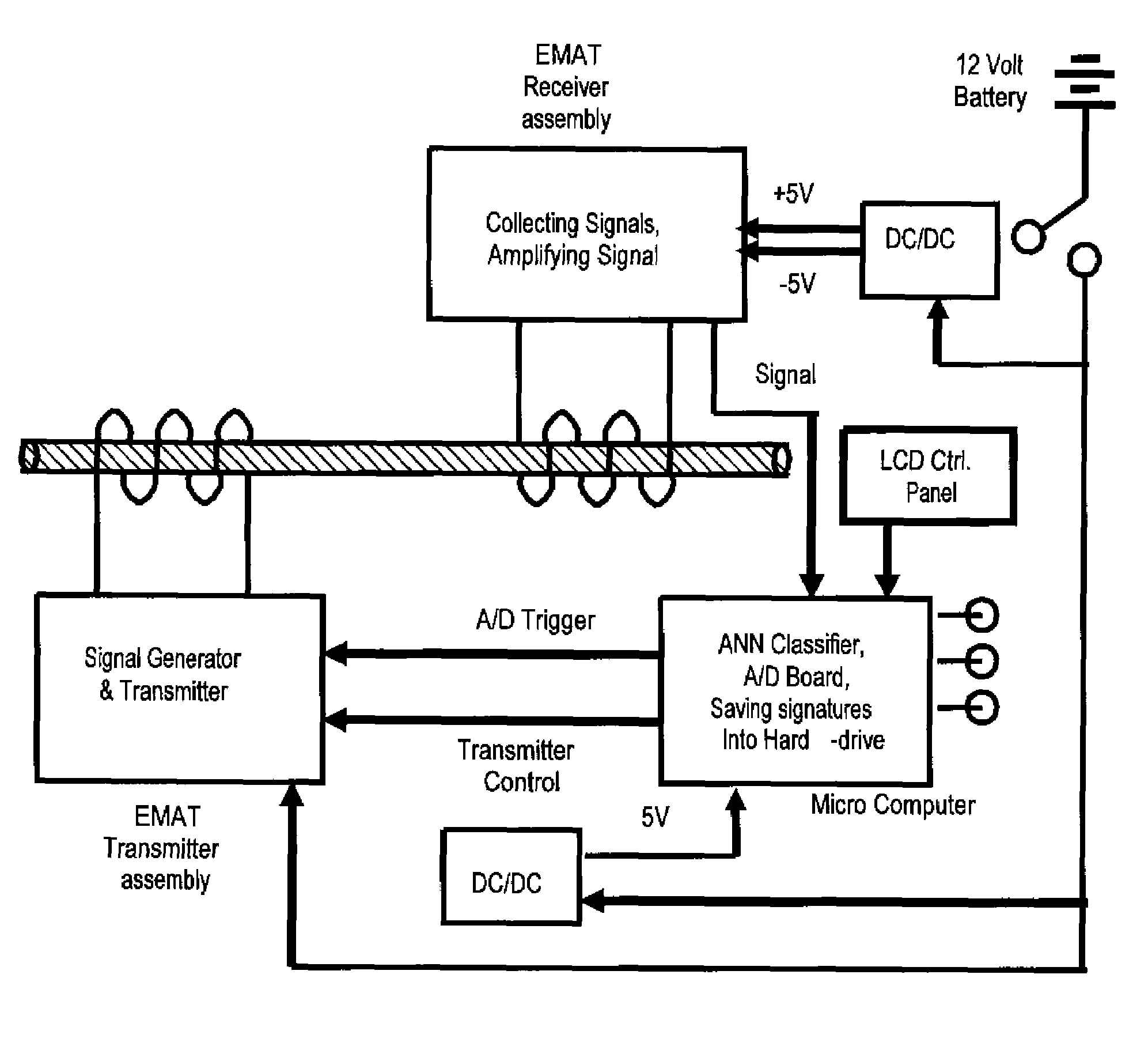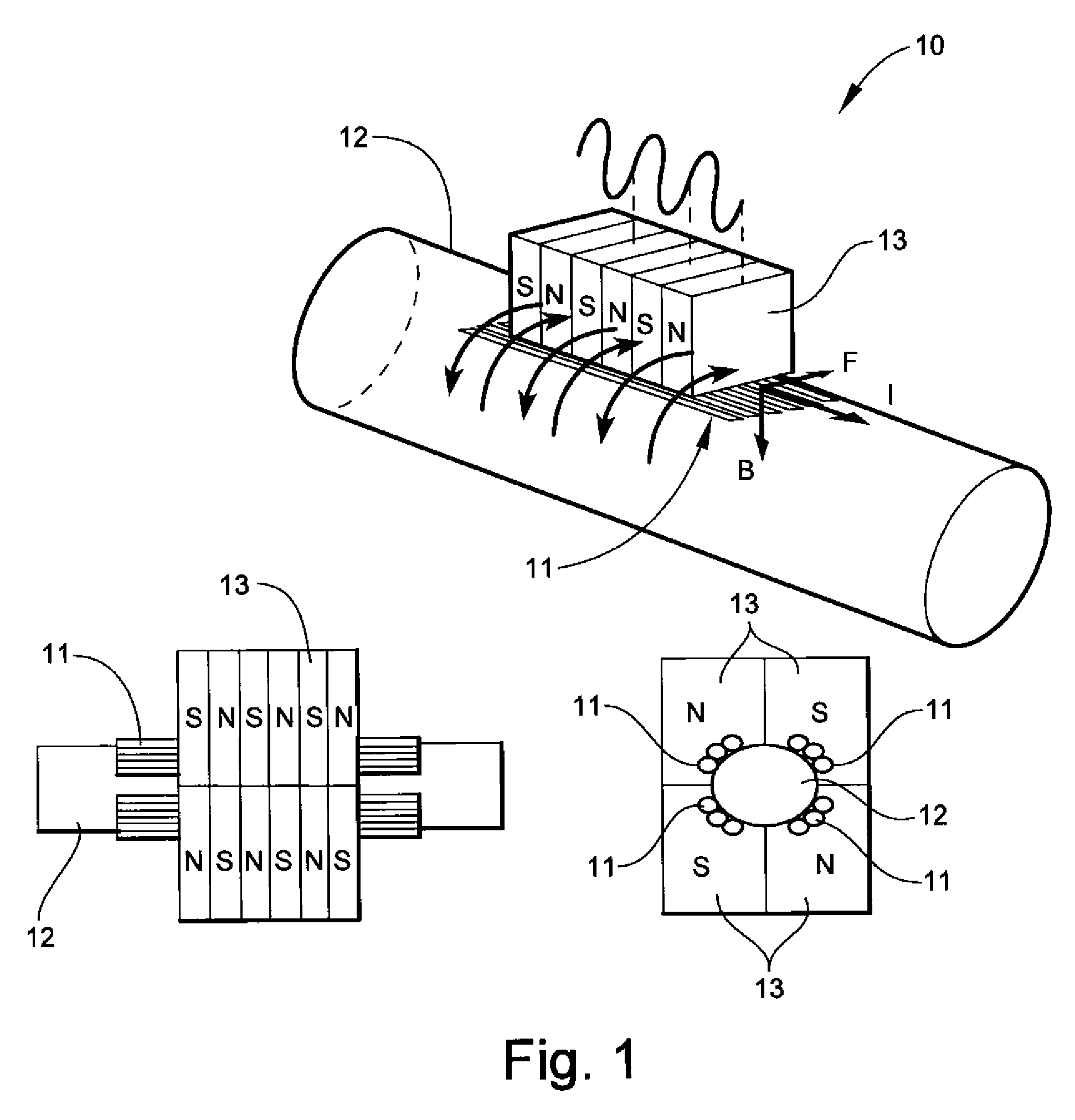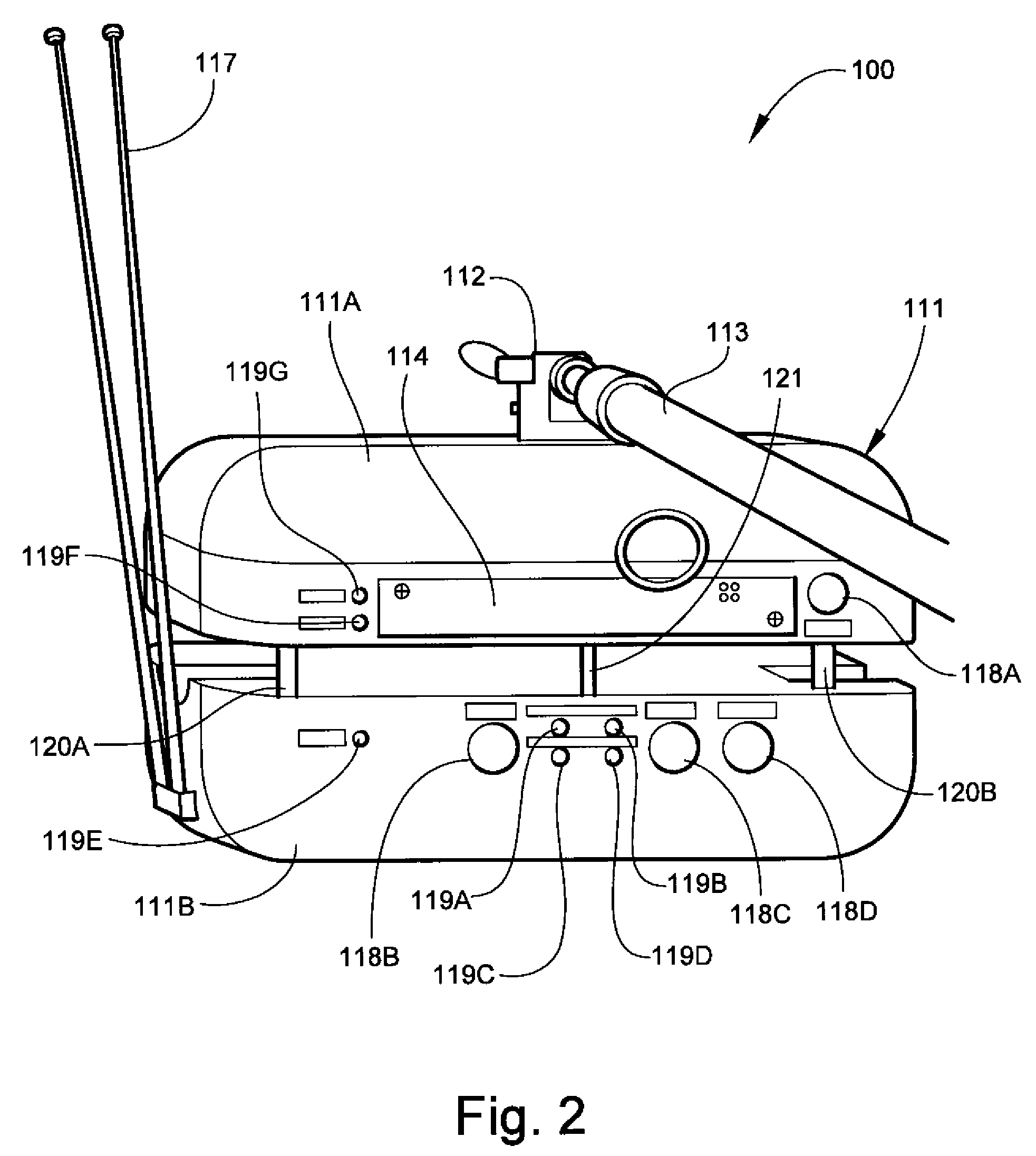Self-contained apparatus for inspection of electric conductors
a self-contained, conductor technology, applied in the direction of instruments, specific gravity measurement, line-transmission details, etc., can solve the problems of inability to test the area under the unit, the effect of looking at the effects of corrosion, and only detecting damage to the outer strand of the conductor
- Summary
- Abstract
- Description
- Claims
- Application Information
AI Technical Summary
Benefits of technology
Problems solved by technology
Method used
Image
Examples
Embodiment Construction
[0071]Referring to FIG. 1, the present invention utilizes Electromagnetic Acoustic Transducers (EMAT) to monitor, diagnose, and identify failures in an energized or de-energized conductor, i.e. transmission lines. An EMAT 10 consists of a transmitter and a receiver. The EMAT 10 couples ultrasonic energy into conductive materials. The simplest form of an EMAT 10 is a wire loop held near a conductive material with a magnet placed above the wire. The transmitter operates based on principles similar to an electric motor, which develops torsional waves. As shown, a copper coil 11 is placed as close to a test specimen 12 as possible and an alternating current is injected. This current produces a dynamic magnetic field (H), which varies in time and space. The resulting eddy current density (J) produced in the test specimen 12 is given by Maxwell's equation, represented by:
{right arrow over (J)}={right arrow over (∇)}×{right arrow over (H)} (1)
From Maxwell's equations for quasi-static cond...
PUM
| Property | Measurement | Unit |
|---|---|---|
| current | aaaaa | aaaaa |
| voltage level | aaaaa | aaaaa |
| voltage | aaaaa | aaaaa |
Abstract
Description
Claims
Application Information
 Login to View More
Login to View More - R&D
- Intellectual Property
- Life Sciences
- Materials
- Tech Scout
- Unparalleled Data Quality
- Higher Quality Content
- 60% Fewer Hallucinations
Browse by: Latest US Patents, China's latest patents, Technical Efficacy Thesaurus, Application Domain, Technology Topic, Popular Technical Reports.
© 2025 PatSnap. All rights reserved.Legal|Privacy policy|Modern Slavery Act Transparency Statement|Sitemap|About US| Contact US: help@patsnap.com



